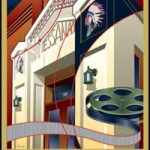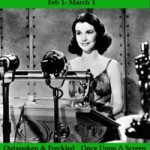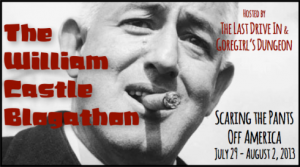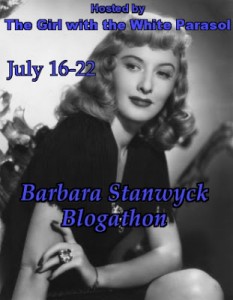Silents are Golden: Silent Directors – The Daring Tod Browning

Known chiefly for his macabre masterpieces Dracula (1931) and Freaks (1932), Tod Browning is widely considered one of the all-time greatest horror film directors. But his cinematic roots stretched back much further than those early ‘30s talkies. Some people might know about his mid- to late-1920s collaborations with silent film legend Lon Chaney, but interestingly, he got his start even earlier than that.
Browning’s backstory is appropriately colorful, fitting for a man who was always fascinated by the bizarre. Born Charles Albert Browing Jr. in 1880 to a middle-class family in Louisville, Kentucky, during his childhood he developed a fascination with the circus. While his home life was comfortable it was too prosaic for the rebellious Charles, and at age 16 he decided to, quite literally, run away and join the circus. After working his way up from laborer and to sideshow barker to song-and-dance man, he also worked as a contortionist and a clown. One of his employers was none other than the Ringling Brothers circus. He also showed his flair for the macabre early on with his live burial act “The Living Hypnotic Corpse” and his adoption of the name “Tod Browning”– “Tod” being the German word for “death.”

In the mid-1900s Browning married Amy Louis Stevens but soon left her for another fascination: vaudeville. Working for several years in comedy and magic acts, he would also clown alongside comedian Charlies Murray in a sketch based on the comic strip characters Mutt and Jeff. By 1913, like many stage actors he had begun transitioning to the entirely new medium of film–and funnily enough, the future master of the grotesque would get his start in slapstick comedies.
Hired by the Biograph studio in New York, Browning was put to work in its “Komic Comedies” unit that was supervised by D.W. Griffith. His fellow performers included Fay Tincher, Max Davidson, Elmer Booth and Edward Dillon, who was also the director. Their fast paced schedule resulted in one comedy short a week, and Browning learned about the filmmaking process very quickly, ultimately deciding he wanted to start directing himself.

His first effort at directing is thought to be The Lucky Transfer (1915), about two robbers who accidentally give away the hiding place of their loot. But a tragic event in 1915 was certainly a strong influence on Browning’s future leanings towards the dark and grotesque. While driving drunk one night with friends Elmer Booth and George Siegmann, he collided with a railroad flat car loaded with steel rails. Booth was killed instantly, and both Browning and Siegmann were badly injured. After months of slow recovery Browning would turn to screenwriting, and he started directing again in 1917, his acting days now behind him. He would also marry Alice Watson (this marriage would last until her death in 1944).
He would lean heavily towards melodrama in his directing career, and themes of guilt, moral or sexual frustration, criminality, hypocrisy, and freakishness would pop up repeatedly. He directed films for Fine Arts/Triangle, Metro Pictures, and Bluebird Photoplays. With titles like The Jury of Fate (1917) and The Eyes of Mystery (1918), these films were consistently profitable and gave him the reputation of being a successful director. Moving over to Universal, where he would direct until 1923, some of his most popular films starred Priscilla Dean, often in “underworld dame” types of roles. Universal was also where Browning worked with the great Lon Chaney for the first time, starting with The Wicked Darling (1919). This would be followed a couple years later by Outside the Law (1921), where Chaney played a dual role of both a virtuous character and a villain. A highlight was a much-admired trick photography scene where Chaney’s villain character appeared to murder his virtuous counterpart.

Chaney, with his sensitive acting skills, flair for grotesque characters, and tough features that lent themselves well to crime stories, was an excellent match for Browning’s kind of films. When Universal’s vice president Irving Thalberg moved over to MGM, Chaney and Browning decided to follow him. The eight MGM films they made together are considered some of the finest of both their careers, the plots revolving around “freakish” characters, circuses, and more of those criminal underworlds.

Examples include The Unholy Three (1925), their first MGM film, which had Chaney playing a cross-dressing ventriloquist who teams up with a dwarf performer and a strongman to become jewel thieves–a decidedly eclectic start. In The Blackbird (1926) Chaney played a criminal known as “The Blackbird” who creates a saintly (and physically deformed) alter ego called “The Bishop.” The shocking The Unknown (1927), probably the best of the Browning/Chaney collaborations, presented Chaney as a circus performer in love with his beautiful assistant, who has a pathological fear of being embraced by men. He decides to have his arms amputated for her, but the results become tragic in more ways than one.

Today, however, the most famous Browning/Chaney film also happens to be the most famous lost silent of all time: London After Midnight (1927). Chaney plays a detective investigating a murder at a London mansion. Events turn surreal when the bizarre “Man in the Beaver Hat” and a pale, goul-like woman take up residence in the abandoned mansion and start frightening the neighbors. Ah, but could there be a connection between the detective and the Man in the Beaver Hat? Much of the lost film’s mystique revolves around Chaney’s iconic spooky makeup, where he widened his eyes with wires and added shark-like teeth. While the film itself was tepidly reviewed back in the day, tantalizing stills of Chaney amid creepy, quasi-German Expressionist surroundings make London After Midnight the most eagerly sought-after lost silent.

Browning’s last silent was Where East is East (1929), starring Chaney as an animal trapper in Laos. He worked with Chaney in one talkie, Outside the Law (1930), a remake of his own 1921 film. But sadly, Chaney would pass away from lung cancer during the filming of Dracula (1931), and was famously replaced as the lead by Bela Legosi. The rest of Browning’s directing career, as we know, is history, lasting until 1939 and leaving bizarre classics like Freaks (1932) and The Mark of the Vampire (1935) in its wake. He lived a reclusive life in Malibu until 1962, isolated from the Hollywood establishment that once thought of him as “the Edgar Allan Poe of the cinema.”
…
–Lea Stans for Classic Movie Hub
You can read all of Lea’s Silents are Golden articles here.
Lea Stans is a born-and-raised Minnesotan with a degree in English and an obsessive interest in the silent film era (which she largely blames on Buster Keaton). In addition to blogging about her passion at her site Silent-ology, she is a columnist for the Silent Film Quarterly and has also written for The Keaton Chronicle.





















































































































